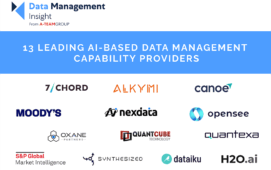Valuations provider Pricing Partner has been talking up its new service aimed at providing greater accuracy around recovery rate assumptions for credit default swaps (CDSs). The vendor claims that the financial crisis has highlighted the inaccurate modelling assumptions that have been used as the basis for valuations for these credit derivatives.
Eric Benhamou, CEO of Pricing Partners, explains: “There has been a lot of noise around inaccurate modelling assumptions for the simplistic Gaussian copula model for collateralised debt obligations (CDOs). This is very true but we are surprised that there is much less shout about the inaccurate standard 40% recovery rate assumption.”
The vendor claims that the Lehman default has brought to light the fact that the standard 40% recovery rate assumption for CDS market was “very optimistic”. These derivatives have instead recovered only 5% of their notional value and this has thrown into doubt the fair level for recovery rates, says Benhamou.
In order to deal with this perceived inaccuracy, the vendor has altered its valuations methodology by backing the recovery rate from the underlying bond of the CDS. “We have revisited all our CDS market data to provide more accurate valuation. Backing out the CDS recovery rate is in fact a way to relate the CDS and the bond market, with some liquidity spread between these two,” says Behhamou. “For those market participants who have not revisited their CDS recovery assumptions, we expect a substantial P&L impact.”
He reckons that as an independent valuation provider, it is Pricing Partners’ role to question market inputs and revisit them when it thinks they are not realistic. The impact of such an inaccuracy can be significant, Behnamou claims. “Diminishing CDS recovery rates leads mechanically to lower valuation on credit derivatives. For distressed bonds, backing out CDS recovery from the bond market can lead to a recovery rate as low as 5-15%. This is very different from the 40% we saw before the crisis,” he says.
Subscribe to our newsletter




